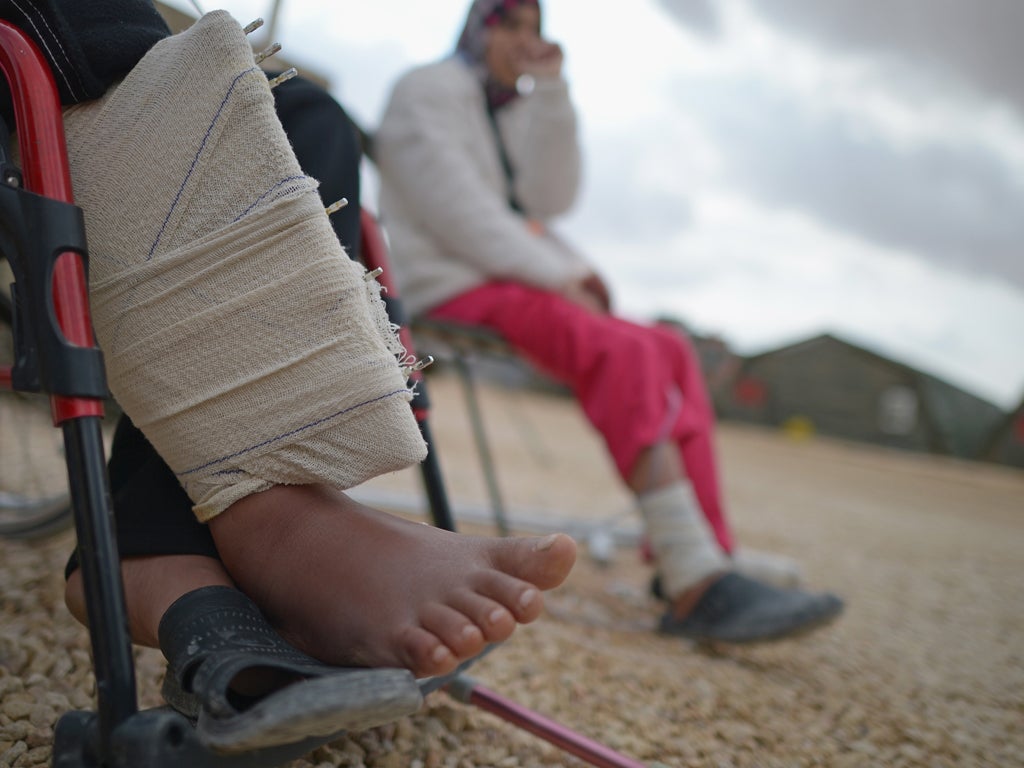The coldest winter in 20 years for Syrian refugees
With a a massive flow of refugees, there is still a long way to go before they get the support they need

Your support helps us to tell the story
From reproductive rights to climate change to Big Tech, The Independent is on the ground when the story is developing. Whether it's investigating the financials of Elon Musk's pro-Trump PAC or producing our latest documentary, 'The A Word', which shines a light on the American women fighting for reproductive rights, we know how important it is to parse out the facts from the messaging.
At such a critical moment in US history, we need reporters on the ground. Your donation allows us to keep sending journalists to speak to both sides of the story.
The Independent is trusted by Americans across the entire political spectrum. And unlike many other quality news outlets, we choose not to lock Americans out of our reporting and analysis with paywalls. We believe quality journalism should be available to everyone, paid for by those who can afford it.
Your support makes all the difference.As donors met in Kuwait, to pledge millions of dollars in help to those affected by conflict in Syria, I spent the day in Jordan's Zataari camp, now home to more than 70,000 Syrian refugees.
Kitted out in a padded down jacket, jumper, scarf and goretex boots, I still felt the biting cold. Around me young children, their faces red and raw from the low temperatures, played around. Most didn't have proper shoes but ran around barefoot wearing plastic slippers.
This region has seen its coldest winter in 20 years. Earlier this month, Lebanon and Jordan faced severe winter storms and heavy snow. It was an especially miserable time for the refugees, many of whom fled with just the clothes they were wearing. Large numbers are living in tents, damp unfinished buildings, or makeshift self-built shelters without heating or electricity. In Zataari, many tents collapsed or flooded in the heavy storms.
Oxfam and other agencies have been providing warm blankets, mattresses, heating oil and stoves to try to provide some relief during this difficult time of the year.
Parents complained their children were getting sick - coming down with colds and bronchial infections.
The children still played outdoors - seemingly resilient to the horrors many had witnessed back home. But watching some youngsters in one neighbourhood sheltering refugees in Lebanon, playing mock war-games with sticks and hiding behind building blocks to escape mock sniper fire, I realised that the scars of conflict will take a long time to heal.
Five year old Mahdi, a sweet-faced boy with twinkling eyes, has very real scars that his family showed to me. He was shot at by a sniper. Miraculously, the bullets exited his back, leaving ugly scars but no other serious physical damage.
Children like Mahdi need more support than they're getting now - not just now but probably for a long time to come.
The UN and aid agencies have been struggling with big funding shortalls, hampering their ability to provide the scale of aid that's needed to respond to what's become a massive flow of refugees - more than 700,000 at the latest count. In the past month alone, more than 40,000 Syrians have crossed the border seeking safety in Jordan.
Today's promises of large-scale aid are encouraging. But promises and pledges must be quickly turned into real aid on the ground so that families quickly get the help they so desperately need.
Caroline Gluck is Oxfam's humanitarian press officer currently in Jordan
Join our commenting forum
Join thought-provoking conversations, follow other Independent readers and see their replies
Comments